This article was co-authored by Alina Lane, DDS and by wikiHow staff writer, Hannah Madden. Dr. Alina Lane is a Dentist who runs All Smiles Dentistry, a general practice dental office based in New York City. After completing a DDS at the University of Maryland, Dr. Lane completed a year-long clerkship in Implantology at the University of Maryland, where she focused on the advanced restoration of dental implants. She continued her advanced education by completing a General Practice Residency at Woodhull Medical Center, an affiliate of the NYU School of Medicine. She received the Woodhull Medical Center Resident of the Year 2012-2013.
There are 23 references cited in this article, which can be found at the bottom of the page.
wikiHow marks an article as reader-approved once it receives enough positive feedback. This article has 27 testimonials from our readers, earning it our reader-approved status.
This article has been viewed 1,333,002 times.
Ouch! Just bit your tongue? Whether it was from chewing too fast, a sports injury, or a fall, a bitten tongue isn’t easy to ignore. Fortunately, this wound is common enough that there are helpful remedies you can use to speed up the healing process and manage your pain. For everything you need to know about healing a bitten tongue fast, read on.
Things You Should Know
- Apply pressure to your tongue if it’s bleeding, and reduce swelling by holding an ice cube against your tongue.
- Rinse your mouth out with saltwater or mouthwash to promote healing and prevent infections.
- Apply a numbing mouth gel to the wound to manage pain, and take over-the-counter pain relievers if you need to.
Steps
Immediate First Aid
-
1Wash your hands. Before you touch the inside of your mouth, take a minute to wash your hands with warm water and soap, or use hand sanitizer. The goal is to prevent the germs on your hands from transferring to the now open wound on your tongue, possibly causing infection.[1]
-
2Apply pressure to the wound. Push your tongue up to the roof of your mouth and hold it there for 5 seconds at a time. Your tongue will most likely start bleeding the moment it is bitten because it is highly vascular. Applying pressure to the area will slow the blood flow and allow it to clot.[2]
- If you can reach the wound, grab a piece of ice and place it on the bitten area. Move the ice on and off until it melts. Or, place a clean cloth or medical gauze on the area, pressing down a bit as you do so.[3]
Advertisement -
3Examine the wound. Open your mouth wide and use a mirror to look inside at your tongue. If the bleeding has stopped and the wound appears superficial, continue to treat it at home. If the bleeding continues or increases and the cut seems deep, call your dentist or doctor to see if sutures are necessary.[4]
- It may also be an emergency if the bleeding is intense. In this case, call emergency services.
-
4Check for other injuries. Biting your tongue can often be the result of a sports injury or a falling accident. Feel the rest of your mouth to check for damaged or loose teeth, or bleeding gums which can be caused by a tooth fracture. Move your jaw up and down to see if you experience any additional pain. If you have one of these injuries, contact your doctor or dentist.[5]
-
5Apply a cold pack to reduce swelling. Your tongue will begin to swell right after the injury. This makes it easy to bite it again. Place something cold, such as ice wrapped in a clean cloth, to the wound site. Hold the pack in place for a minute until numbness begins to set in, then remove it. Do this several times over the next few days.[6]
- If you’re caring for your injured child, use a frozen fruit bar to numb the area.
-
6Take a pain pill. Choose an anti-inflammatory medication that you tolerate well, such as Advil, and take the recommended dosage as soon as you can. This will help to reduce the swelling. It will also counter the onset of pain, which is likely to occur shortly after injury.[7]
-
7Rinse with mouthwash. If you have mouthwash on hand, use it to quickly rinse out your mouth. This will help to clean the area and prevent infection. This is especially important if you were eating when you bit down. Spit out the mouthwash and repeat once more if blood is present.[8]
- If you have a bump on your tongue, also called “lie bumps,” using mouthwash can help. Bumps on your tongue usually happen after an injury, but they tend to go away on their own after a week or so with home care.[9]
Cleaning Your Wound
-
1Do a saltwater rinse. Take 1 cup (250mL) of warm tap water. Add 1 tsp (5 g) of salt and mix with a spoon. Swish this mixture in your mouth for 15 to 20 seconds and then spit it out. Repeat this process up to 3 times a day until healed. It is especially effective immediately after meals.[10]
- The salt helps to kill off bad bacteria in the mouth. This makes the area cleaner and lowers the possibility of infection.[11] It also has healing properties that may help the wound to heal faster.
-
2Rinse with an antacid or antihistamine. Take one part of diphenhydramine, like Benadryl allergy liquid, and one part of an antacid, like milk of magnesia, and mix it together. Swish this mixture in your mouth for a minute and then spit it out. Do this once or twice a day.[12]
- Antacids control the acid levels in the mouth which promotes healing. An antihistamine will lessen the inflammation. Combining these medicines creates what some people refer to as a “miracle mouthwash.”
- If you don’t feel comfortable swishing the mixture, make the solution a bit thicker and apply it as a paste.
-
3Swish hydrogen peroxide and water in your mouth. Mix equal parts hydrogen peroxide (3%) and water in a glass. Swish this mixture in your mouth for 15 to 20 seconds and then spit it out. Be careful not to swallow.[13] Repeat this process up to 4 times daily.
- Hydrogen peroxide is a powerful antiseptic which will help to control bacterial activity in your wound. It will also act as a cleansing agent by removing debris from the cut and delivering a constant quantity of oxygen to the cells, which also helps to stop the bleeding.
- However, hydrogen peroxide has been shown to cause irritation, especially when used long-term.[14] Always use a weak concentration, and only swish it in your mouth for a few seconds at a time.
- Hydrogen peroxide can also help whiten your teeth. However, it may cause some tooth sensitivity.[15]
-
4Use a traditional mouthwash. Benzydamine hydrochloride, 0.12% chlorhexidine gluconate, or just your standard mouthwash are all good options. Take the suggested amount into your mouth and swish it around for 15 to 30 seconds. Spit the liquid out. Repeat this process after eating. This will help to keep your wound clear of food particles, which also promotes healing by preventing infection.[16]
- Traditional mouthwash is a great way to help heal lumps, sores, and bumps on the tongue that come from injury.
Pain Management
-
1Continue to use an ice pack or cold compress. Place a few ice cubes in a plastic bag and then put this on your tongue until the pain is lessened. Wrap the bag in a moist hand towel for additional comfort. Suck on a popsicle or drink cold liquids for relief, but stay away from anything acidic, since that could hurt your tongue more.[17]
- This will stop the bleeding if your cut reopens and it will reduce your pain during the healing process.
- Be patient—it can take anywhere from a few days to a couple of weeks or longer for your tongue to heal, depending on how severely you bit it. During that time, avoid crunchy, spicy, hot, or cold foods that could irritate your tongue.[18]
-
2Apply aloe vera. Get some aloe vera gel, or cut an aloe vera leaf and squeeze out some of the jelly from the inside. Apply this substance to your wound a maximum of 3 times a day. For best results, apply after rinsing your mouth and before you go to sleep at night.[19]
- Aloe vera is a natural plant-based remedy that has been shown to improve blood circulation. It also combats certain types of harmful bacteria. Just be careful not to swallow the gel directly, since it can upset your stomach.
- For a longer lasting solution, apply the gel to a piece of sterile gauze and keep it on the wound. This may provide a longer lasting effect by preventing your saliva from diluting the gel.
-
3Apply a numbing mouth gel. Orajel, for example, comes in a small tube for easy application. Simply squeeze a bead of the gel onto a clean cotton swab and apply to the wound area. Repeat this application 2 to 4 times a day until your tongue is healed.[20]
- Or, use an oral adhesive paste.
-
4Use baking soda. Mix a teaspoon of baking soda with water until it forms a smooth consistency. Dip a cotton swab into the mixture and apply it to the bitten area. Baking soda lessens the production of acids and bacteria. It is helpful in reducing swelling and inflammatory pain.[21]
-
5Eat honey. Fill a teaspoon up with honey, lick the it off or drip it onto the wound area. Repeat this process twice a day. The honey will coat your mouth and prevent the accumulation of harmful bacteria.[22] For even better results, add a dash of turmeric to the honey. Turmeric is antibacterial and will help in the bacteria fight, which will promote healing when it is combined with bee propolis.[23]
-
6Apply milk of magnesia to your wound. Dip a cotton swab into a bottle of milk of magnesia. Apply the medicine to the wound area. Do this 3 to 4 times a day. It is even more effective when used after a rinse. Milk of magnesia is an active antacid. It will make the environment of your mouth more hospitable for good bacteria.[24]
Preventing a Bitten Tongue
-
1See your dentist at least twice a year.[25] If you need additional care due to biting issues, make more frequent appointments. Some people are particularly at risk for mouth injuries, such as those with sharp teeth or those who have lots of cavities that might cause fractures and leave sharp edges, so your dentist can suggest possible solutions.
- For example, if your teeth are not aligned properly, you might find yourself biting your tongue repeatedly. Your dentist or an orthodontist will be able to offer preventative suggestions.
-
2Check the fit of your dentures if you wear them. Make sure that your dentures fit snugly against your gums and do not move a lot. Your dentures shouldn’t have sharp edges. See your dentist to make sure your dentures fit correctly if you are suffering from biting injuries.[26]
-
3Avoid irritation from orthodontic appliances. If you wear orthodontic appliances, make sure that they fit in your mouth without too much movement. Ask your orthodontist about the level of movement they anticipate. This will help you to make corrections and avoid biting your tongue. Also, place a small ball of wax over any sharp brackets that may puncture your tongue.[27]
-
4Wear protective gear while playing sports. If you play a sport where your mouth could be at risk, wear a mouth guard and/or a helmet. These devices will stabilize your jaw in the event of an impact and lessen the possibility of tongue biting or other injuries. [28]
-
5Manage your epilepsy safely. If you have epilepsy, provide careful instructions for those around you. Placing an item in your mouth during a seizure may do more harm than good and may lead to biting injuries. Instead, have someone call for assistance and roll you onto your side until help arrives.[29]
Expert Q&A
-
QuestionWhat if my tongue is already infected and has a yellow appearance and is swollen?
 Cristian Macau, DDSDr. Macau is an oral surgeon, periodontist, and aesthetician at Favero Dental Clinic in London. He received his DDS from Carol Davila University of Medicine in 2015.
Cristian Macau, DDSDr. Macau is an oral surgeon, periodontist, and aesthetician at Favero Dental Clinic in London. He received his DDS from Carol Davila University of Medicine in 2015.
Doctor of Dental Surgery You should start using mouthwash right away, brush your teeth regularly, and book an appointment with a dentist or oral surgeon as fast as possible. They may prescribe you antibiotics depending on the situation or in severe cases surgery can also be an option. Try to keep a sterile environment and avoid smoking.
You should start using mouthwash right away, brush your teeth regularly, and book an appointment with a dentist or oral surgeon as fast as possible. They may prescribe you antibiotics depending on the situation or in severe cases surgery can also be an option. Try to keep a sterile environment and avoid smoking. -
QuestionI bit my tongue a week ago and now I have a white bump on it. Is this a healing sore?
 Cristian Macau, DDSDr. Macau is an oral surgeon, periodontist, and aesthetician at Favero Dental Clinic in London. He received his DDS from Carol Davila University of Medicine in 2015.
Cristian Macau, DDSDr. Macau is an oral surgeon, periodontist, and aesthetician at Favero Dental Clinic in London. He received his DDS from Carol Davila University of Medicine in 2015.
Doctor of Dental Surgery That may be a scar left by the healing process, which includes collagen and elastin fibers. It should disappear after a while as the cells on the tongue have a fast epithelial turnover, which means that cells have a high rate of production
That may be a scar left by the healing process, which includes collagen and elastin fibers. It should disappear after a while as the cells on the tongue have a fast epithelial turnover, which means that cells have a high rate of production -
QuestionHow long does it usually take for a bitten tongue to heal?
 Alina Lane, DDSDr. Alina Lane is a Dentist who runs All Smiles Dentistry, a general practice dental office based in New York City. After completing a DDS at the University of Maryland, Dr. Lane completed a year-long clerkship in Implantology at the University of Maryland, where she focused on the advanced restoration of dental implants. She continued her advanced education by completing a General Practice Residency at Woodhull Medical Center, an affiliate of the NYU School of Medicine. She received the Woodhull Medical Center Resident of the Year 2012-2013.
Alina Lane, DDSDr. Alina Lane is a Dentist who runs All Smiles Dentistry, a general practice dental office based in New York City. After completing a DDS at the University of Maryland, Dr. Lane completed a year-long clerkship in Implantology at the University of Maryland, where she focused on the advanced restoration of dental implants. She continued her advanced education by completing a General Practice Residency at Woodhull Medical Center, an affiliate of the NYU School of Medicine. She received the Woodhull Medical Center Resident of the Year 2012-2013.
Board Certified Dentist It can take anywhere from a few days up to a couple of weeks. If you've damaged it quite a bit, it might even take a month to heal. During that time, avoid hard, crunchy, spicy, hot, or cold foods that could irritate it. Also, use warm salt water rinses througout the day to minimize the amount of bacteria that gets into the wound area.
It can take anywhere from a few days up to a couple of weeks. If you've damaged it quite a bit, it might even take a month to heal. During that time, avoid hard, crunchy, spicy, hot, or cold foods that could irritate it. Also, use warm salt water rinses througout the day to minimize the amount of bacteria that gets into the wound area.
References
- ↑ https://www.cdc.gov/hygiene/personal-hygiene/hands.html?CDC_AA_refVal=https%3A%2F%2Fwww.cdc.gov%2Fhealthywater%2Fhygiene%2Fhand%2Fhandwashing.html
- ↑ https://www.seattlechildrens.org/conditions/a-z/mouth-injury/
- ↑ https://www.seattlechildrens.org/conditions/a-z/mouth-injury/
- ↑ https://healthy.kaiserpermanente.org/health-wellness/health-encyclopedia/he.tongue-injury-care-instructions.aby3895
- ↑ https://www.seattlechildrens.org/conditions/a-z/mouth-injury/
- ↑ http://www.hopkinsmedicine.org/healthlibrary/conditions/orthopaedic_disorders/ice_packs_vs_warm_compresses_for_pain_85,P00918/
- ↑ https://healthy.kaiserpermanente.org/health-wellness/health-encyclopedia/he.tongue-injury-care-instructions.aby3895
- ↑ https://pubmed.ncbi.nlm.nih.gov/9663026/
- ↑ https://dermnetnz.org/topics/transient-lingual-papillitis
- ↑ https://myhealth.alberta.ca/health/AfterCareInformation/pages/conditions.aspx?hwid=aby3895&
- ↑ Alina Lane, DDS. Board Certified Dentist. Expert Interview. 21 April 2020.
- ↑ http://www.mayoclinic.org/tests-procedures/chemotherapy/expert-answers/magic-mouthwash/faq-20058071
- ↑ https://www.dentaly.org/us/oral-hygiene/best-mouthwash/hydrogen-peroxide-mouthwash/
- ↑ https://pubmed.ncbi.nlm.nih.gov/11225528/
- ↑ Alina Lane, DDS. Board Certified Dentist. Expert Interview. 21 April 2020.
- ↑ https://www.seattlechildrens.org/conditions/a-z/mouth-ulcers/
- ↑ https://myhealth.alberta.ca/health/AfterCareInformation/pages/conditions.aspx?hwid=aby3895&
- ↑ Alina Lane, DDS. Board Certified Dentist. Expert Interview. 21 April 2020.
- ↑ http://www.ghrnet.org/index.php/joghr/article/view/3002/3298
- ↑ https://www.mayoclinic.org/drugs-supplements/lidocaine-and-prilocaine-gingival-route/side-effects/drg-20066996?p=1
- ↑ https://medlineplus.gov/ency/patientinstructions/000047.htm
- ↑ https://www.mayoclinic.org/drugs-supplements-honey/art-20363819
- ↑ https://www.ncbi.nlm.nih.gov/books/NBK92752/
- ↑ https://ufhealth.org/canker-sore
- ↑ https://www.nhs.uk/live-well/healthy-teeth-and-gums/dental-check-ups/
- ↑ https://medlineplus.gov/ency/article/003059.htm
- ↑ https://orthodonticsaustralia.org.au/orthodontic-wax/
- ↑ https://www.nationwidechildrens.org/specialties/sports-medicine/sports-medicine-articles/mouth-guards-in-sports-a-necessary-piece-of-equipment
- ↑ https://health.clevelandclinic.org/13-common-epilepsy-myths-debunked/
- ↑ https://medlineplus.gov/ency/article/003059.htm
About This Article
To heal your bitten tongue, rinse your mouth with a rinse made from 1 cup of warm water and 1 teaspoon of salt. Swish the mixture around for 15-20 seconds, then spit it out. Do this 3 times a day until your tongue is healed. To relieve the pain from a bite, apply a numbing antiseptic gel or aloe vera gel to your tongue, or place a few ice cubes in a plastic bag and place this on your tongue for a few minutes. For more immediate first aid tips from our Medical reviewer, read on!
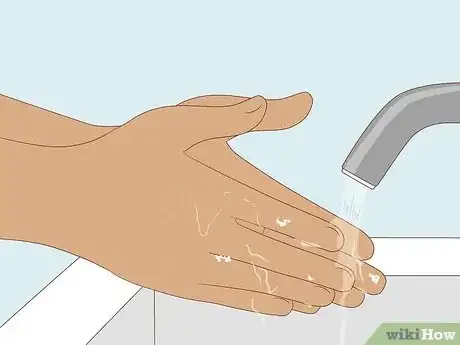
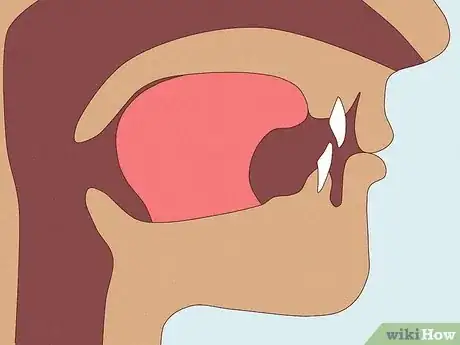
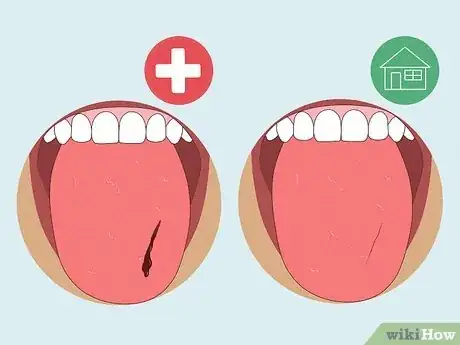
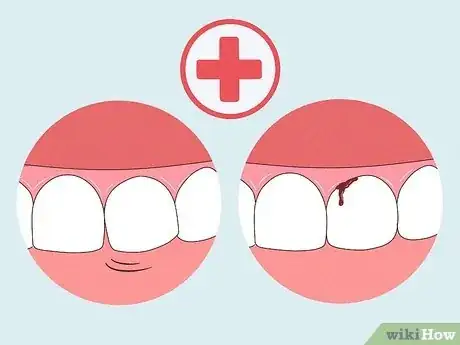

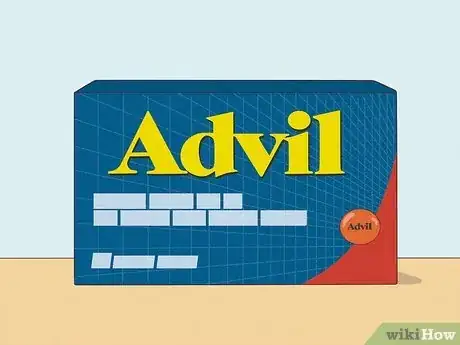



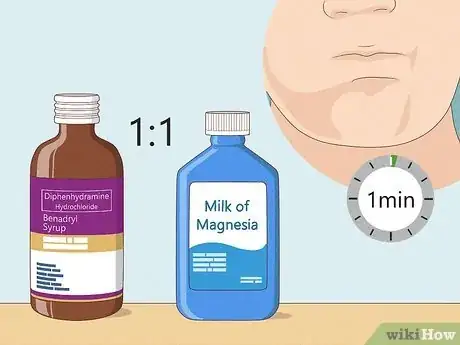
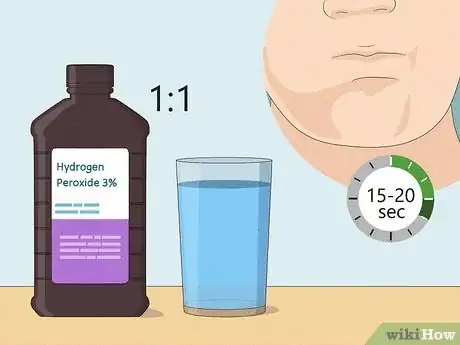
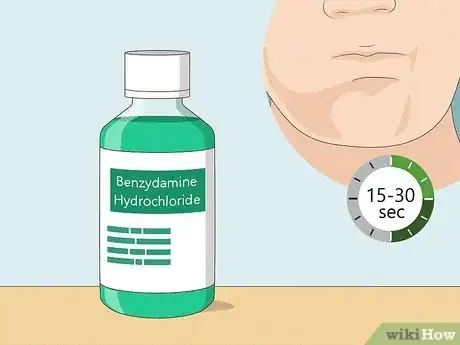
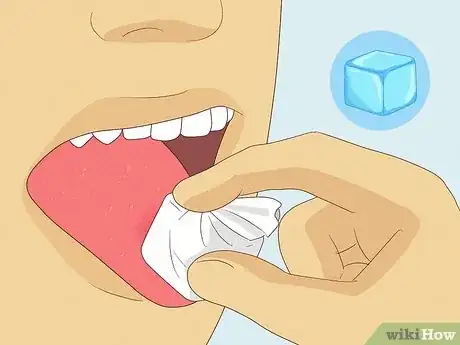

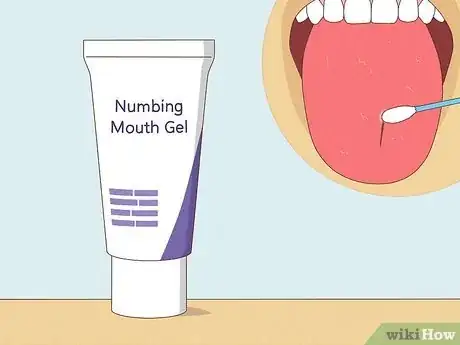

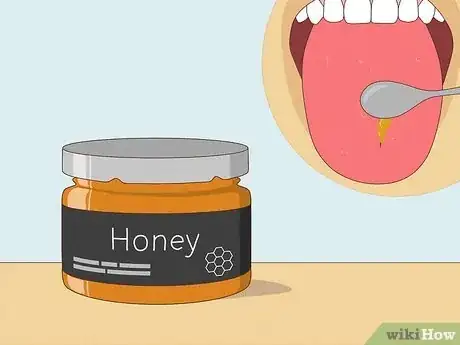

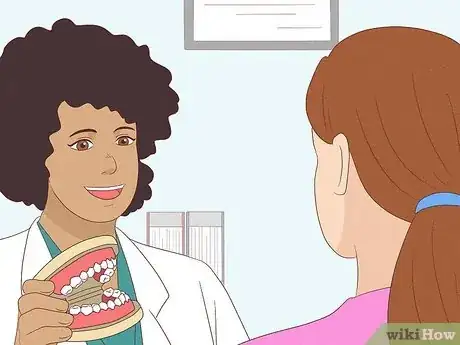
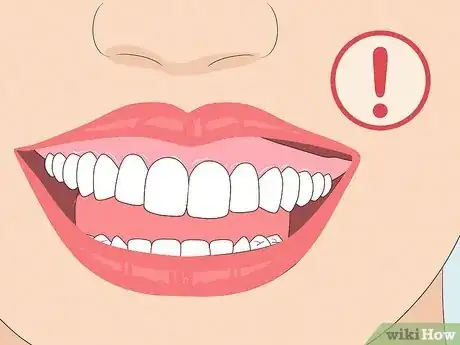


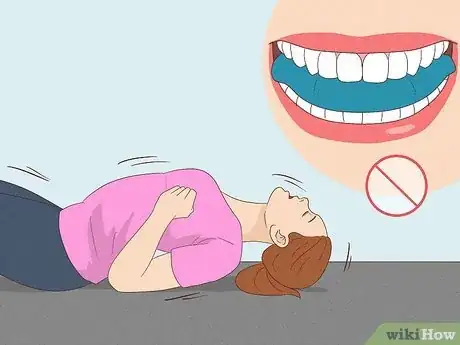
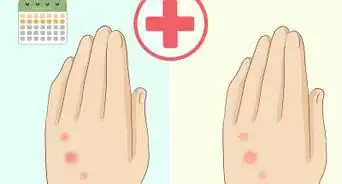

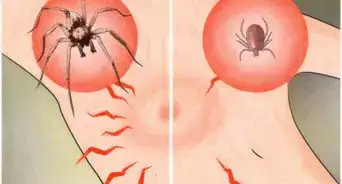


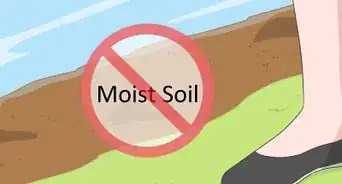

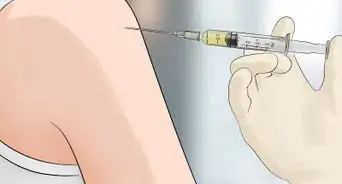
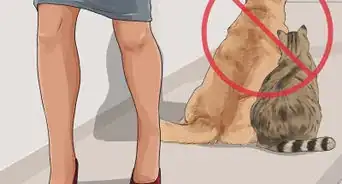
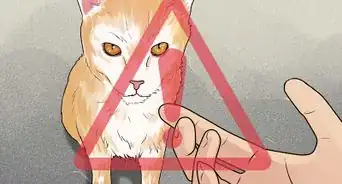


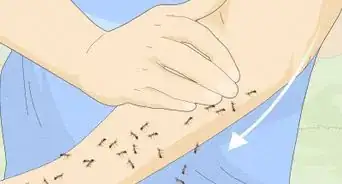








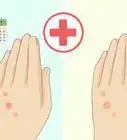
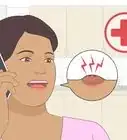
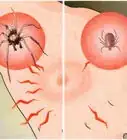





































Medical Disclaimer
The content of this article is not intended to be a substitute for professional medical advice, examination, diagnosis, or treatment. You should always contact your doctor or other qualified healthcare professional before starting, changing, or stopping any kind of health treatment.
Read More...